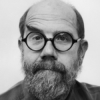Chuck Close

Chuck Close
Charles Thomas "Chuck" Closeis an American painter/artist and photographer who achieved fame as a photorealist, through his massive-scale portraits. Close often paints abstract portraits, that are shown in the world's finest galleries. Although a catastrophic spinal artery collapse in 1988 left him severely paralyzed, he has continued to paint and produce work that remains sought after by museums and collectors. Close lives and works in Bridgehampton, New York and Long Beach, NY and New York City's East Village. His first...
NationalityAmerican
ProfessionPhotographer
Date of Birth5 July 1940
CityMonroe, WA
CountryUnited States of America
Art saved my life in two ways. It made me feel special, because I could do things my friends couldn't, but it also gave me a way to demonstrate to my teacher that, despite the fact that I couldn't write a paper or do math, I was paying attention.
Ease is the enemy of the artist. When things get too easy, you're in trouble.
I always thought that one of the reasons why a painter likes especially to have other painters look at his or her work is the shared experience of having pushed paint around.
Inspiration is highly overrated. If you sit around and wait for the clouds to part, it's not liable to ever happen. More often than not, work is salvation.
I don't work with inspiration. Inspiration is for amateurs. I just get to work.
The thing that interests me about photography, and why it's different from all other media, is that it's the only medium in which there is even the possibility of an accidental masterpiece.
If you're overwhelmed by the size of a problem, break it down into smaller pieces.
I wanted to translate from one flat surface to another.In fact, my learning disabilities controlled a lot of things. I don't recognize faces, so I'm sure it's what drove me to portraits in the first place.
It doesn't upset artists to find out that artists used lenses or mirrors or other aids, but it certainly does upset the art historians.
Painting is the most magical of mediums. The transcendence is truly amazing to me every time I go to a museum and I see how somebody figured another way to rub colored dirt on a flat surface and make space where there is no space or make you think of a life experience.
Neurologically, I'm a quadriplegic, so virtually everything about my work has been driven by my learning disabilities, which are quite severe, and my lack of facial recognition, which I'm sure is what drove me to paint portraits in the first place.
I have always attempted to create images that deliver the maximum amount of information about the subject.
From my point of view, photography never got any better than it was in 1840.
I think I was driven to paint portraits to commit images of friends and family to memory. I have face blindness, and once a face is flattened out, I can remember it better.